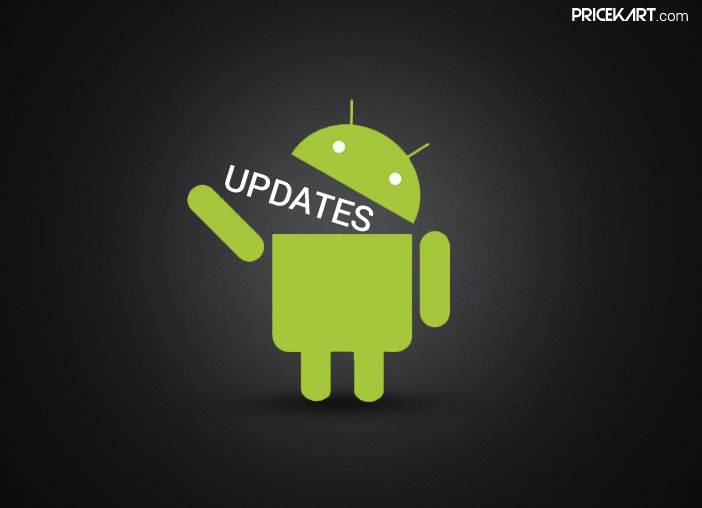In 2005, Larry Page’s vision was to put small computers, which can be held in hand, in the pocket of every common man. These devices should have access to Google was Larry’s motto. So, that year, Google corporate development acquired a small startup with the same ridiculously huge goal and this startup was Andy Rubin’s Android. In this way, Android was introduced to World and thus, Android Smartphones came into permanence.
Let’s take a look at how the Android history has changed during the course of all these years and brought a revolution into the world of smartphones.
Android Alpha:
The very first version was Android Alpha which was launched in November 2007 however, it was not commercially available. This was the latest version and the success of Alpha was an inspiration for Google Android to grow further.
Android 1.0:
Eventually, the first commercial version launched by Google Android was Android 1.0. It was September 2008 and the smartphone revolution was above to begin. Furthermore, Android never stopped and each successor was updated to be better than the previous one.
Android 1.1:
Android 1.1 was launched on February 2009, which was initially developed to use in HTC Dream smartphone (Now Discontinued). This version was internally called as “Petit Four” however; this name was not used officially.
Android 1.5:
Android 1.1 was best but it surely needed many improvements. On 27 April 2009, Android 1.5 was introduced and with this version, amazing theme of code-naming started. Android 1.5 was called as ‘Cupcake’. It was based on Linux kernel 2.6.27 and had some amazing features like:
- Virtual keyboards with auto text prediction and user dictionary for adding custom words
- MPEG and 3GP Playback and video recording
- Copy-Paste options in the browser
- Auto screen rotation facility
- Contact pictures for favorites
Android 1.6:
On 15 September 2009, Android 1.6 ‘Donut’ based on Linux kernel 2.6.29 was official. It came with numerous new features like:
- Enhanced Voice and text entry search to include bookmark history
- Speech synthesis engine
- App screenshots can be viewed in Android Market
- CDMA/EVDO, 802.1x and text-to-speech and VPNs support was updated
- Searching speed was improved
- Many Camera applications were introduced which supported this version
Android 2.0 and 2.1:
Android 2.0 Eclair was launched on 26 October. It was much-improved version then Donut and covered up for many Donut bugs. Eclair brought features like:
- Bluetooth 2.1 support
- SMS, MMS can be saved and automatic deletion when inbox limit is crossed
- Camera features like digital zoom, flash support, color effect, scene mode and white balance
- Improved virtual keypad and typing speed
- Live wallpapers can be set now
- Bugs were fixed and framework behavioral was improved
Android 2.2 – 2.2.3:
This was the era of ‘Froyo’. It was based on Linux kernel 2.6.32. Smartphones like Dell Venue used this android version which had improved features like:
- Speed and memory size were improved
- Facilities like USB tethering and Wi-Fi hotspot
- Update for market Apps and Automatic Update option was introduced
- Adobe flash support
- Display up to 320 PPI pixel density were supported now
- Picture zoom feature for Gallery
Android 3 – 2.3.7:
Gingerbread based on Linux kernel 2.6.35 was introduced in December 2010 and this version was just breathtaking. Many bugs were fixed and amazing new features were brought into the picture. Smartphones like LG Optimus L3 E400 and Samsung Galaxy Pocket Duos S5302 used Gingerbread platform as OS. Some of the ground-breaking features of this version were:
- Support for NFC i.e. Near Field Communication
- Audio effects like equalization
- Front Facing camera was introduced using this android version support
- Audio and graphic enhancement for gaming
- Support for sensors like Gyroscopes and Barometers
Android 3.0 – 3.2.6:
Honeycomb was the next android version announced on 22 February 2011. It was based Linux kernel 2.6.36. Few Samsung Tablets used this new version. Honeycomb didn’t appear in many devices but surely it was a great enrichment to Smartphone industry. Some of the features introduced were:
- Improved hardware support tablet optimizations
- SD card accessibility was increased
- Update to Android Market
- Update to Google Books
- Security bugs were fixed, Wi-Fi improvements
Android 4.0 – 4.4.4:
Android ‘Ice cream Sandwich’ was introduced in 2011 based on Linux kernel 3.0.1. Sony Xperia U is one of the smartphones to run on this Android version. In July 2012, the next better version Android 4.1 ‘Jelly Bean’ was announced. It worked on Linux kernel 3.0.31. This version mainly focused on user interface improvement. Few smartphones with Jellybean OS were HTC One X+, Sony Xperia Z series. Later in October 2013, Android 4.4 ‘Kitkat’ was welcomed. It made its debut through Google Nexus 5 and a wide range of devices ran on this new OS. Some of the feature that came with these android versions are:
- Daydream, screensaver showed information when docked
- Lock screen improvements
- Premium SMS configuration and Group messaging
- Low energy Bluetooth support
- Support for 4K resolution
- Native emoji can be used while texting
Android 5.0 – 5.1.1:
In November 2014, ‘Lollipop’ version was announced. Initially, Nexus 5 and Nexus 6 phones ran on this OS. A wide range of devices runs on Lollipop – Xiaomi Redmi note 3, Samsung Galaxy J Max and many more. The new improved features were:
- Support for 64 bits CPUs
- New screen locks
- Print Preview support
- 15 new languages were supported now
- Bugfixes were video playback and password failure issues
Android 6.0 – 6.0.1:
Marshmallow was the next big thing for android lovers. It came with many new fixtures and support for lots of new innovations for devices running on it. To name a few Lenovo k5 note, Google Nexus 6P and Google Nexus 5X runs on this version. Marshmallow came with features like:
- USB Type-C support
- Google ‘Now on Tap’ feature
- MIDI support
- Search bar for application searching and favorite selection option
- 184 new emojis were introduced
Android 7.0 – 7.1:
In August 2016 came the most awaited Android 7.0 ‘Nougat’. Nougat was a game changer. With Android Nougat it became possible to display multiple apps on-screen at once in a split-screen view. Some of the smartphones that uses Android Nougat are Google Pixel XL and Google Pixel. Let’s have a look at what was new in Nougat.
- Multitasking is improved
- Quick setting made more customized
- Dose mode 2.0 for smarter battery life
- Improved speed and security
- VulkanTM for 3D graphics enhancement
Android 8.0 – 8.1:
The latest OS (in 2018) is Android Oreo. Android Oreo is the eighth significant version of the Android operating system. As of April 2018, 4.6% of Android devices run on Android Oreo, with 4.1% on 8.0 version and 0.5% on 8.1 version. Some latest smartphones running on Android Oreo are Samsung Galaxy S9 and Oppo F7. Let’s have a look at what Oreo brought.
- Notification Grouping
- Support for picture-in-picture in video
- Bluetooth version 5
- Battery usage improved
- System-level integration with VoIP apps
Android P:
Lastly, android “P” (P is codename) will be coming soon as the next major Android OS update in later 2018. We haven’t got much information about Android “P”.
Thus, this was the entire timeline of ‘Android’ – an OS that changed everything.




